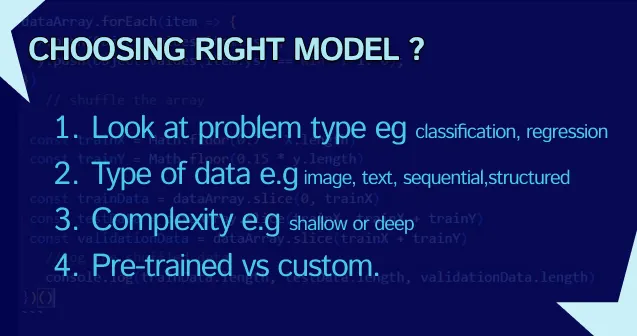
Tensor Operations in TensorFlow.js: Explained with Examples
Discover the concept of tensor operations in TensorFlow.js and learn about commonly used tensor operations through easy-to-understand examples.
· tutorials · 3 minutes
What Are Tensor Operations in TensorFlow.js?
In TensorFlow.js, a tensor is not just a data structure for storing numbers—it’s a powerful tool for performing mathematical operations efficiently. TensorFlow.js provides a wide range of tensor operations, which allow you to manipulate, transform, and compute with tensors. These operations are essential for tasks like matrix multiplication, addition, reshaping data, and more, especially in machine learning.
Why Are Tensor Operations Important?
Tensor operations are what make TensorFlow.js so powerful. These operations allow you to process large amounts of data, like images or numerical datasets, efficiently. The operations can be run on both CPU and GPU, meaning they are optimized for performance.
Commonly Used Tensor Operations
Let’s explore some of the most common tensor operations in TensorFlow.js with easy-to-follow examples.
1. Tensor Addition
Just like adding two numbers, you can add two tensors element by element. Here’s how it works:
import * as tf from '@tensorflow/tfjs';
// Create two tensorsconst tensorA = tf.tensor([1, 2, 3]);const tensorB = tf.tensor([4, 5, 6]);
// Perform element-wise additionconst result = tensorA.add(tensorB);console.log(result.toString());Tensor [5, 7, 9]In this example, the two tensors [1, 2, 3] and [4, 5, 6] are added together element by element, resulting in [5, 7, 9].2. Tensor Multiplication
You can also multiply tensors. Just like addition, this is done element by element:
const tensorC = tf.tensor([1, 2, 3]);const tensorD = tf.tensor([4, 5, 6]);
// Perform element-wise multiplicationconst product = tensorC.mul(tensorD);console.log(product.toString());Tensor [4, 10, 18]In this case, each element in the first tensor is multiplied by the corresponding element in the second tensor.
3. Matrix Multiplication
For more complex operations, you can perform matrix multiplication. This is commonly used in machine learning models
const matrixA = tf.tensor([[1, 2], [3, 4]]);const matrixB = tf.tensor([[5, 6], [7, 8]]);
// Perform matrix multiplicationconst matrixProduct = matrixA.matMul(matrixB);console.log(matrixProduct.toString());Tensor [[19, 22], [43, 50]]Matrix multiplication is essential for tasks like transforming data, and it’s widely used in deep learning models.
4. Reshaping Tensors
You can reshape a tensor into different dimensions using the reshape() function. This is useful when you need to change the shape of your data without altering the values:
const tensorFlat = tf.tensor([1, 2, 3, 4, 5, 6]);
// Reshape to 2x3 matrixconst reshaped = tensorFlat.reshape([2, 3]);console.log(reshaped.toString());Tensor [[1, 2, 3], [4, 5, 6]]Reshaping helps when you need to adjust data formats, such as preparing batches of data for training a model.
5. Tensor Slicing
You can also extract parts of a tensor using slicing. This is similar to selecting a part of an array:
const bigTensor = tf.tensor([[1, 2, 3], [4, 5, 6], [7, 8, 9]]);
// Slice the first two rowsconst sliced = bigTensor.slice([0, 0], [2, 3]);console.log(sliced.toString());Tensor [[1, 2, 3], [4, 5, 6]]Slicing is helpful when you only need to work with a part of the data.
Why Are These Operations Useful?
These tensor operations are the building blocks of machine learning. By performing operations like matrix multiplication, addition, and reshaping, TensorFlow.js allows you to build and train machine learning models efficiently. Tensor operations make it possible to process large datasets, adjust data structures, and perform complex mathematical computations—quickly and easily.
More posts
-

Exploring Tensor Representation in TensorFlow.js
A simple and easy-to-understand guide to the advantages of using tensors in TensorFlow.js for numerical computations, perfect for teenagers exploring machine learning.
-

Understanding Dropout Regularization in TensorFlow.js
Learn about dropout regularization in TensorFlow.js and how it prevents overfitting during model training. Explore its implementation and impact on deep learning models.
-

Selecting an Appropriate Model Architecture for a Given Problem
Learn the step-by-step process of selecting the right model architecture for your machine learning problem. Understand key considerations like data type, task complexity, and TensorFlow.js examples.